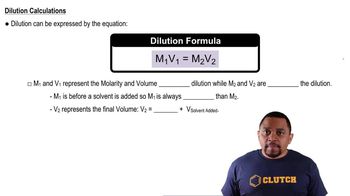Here are the essential concepts you must grasp in order to answer the question correctly.
Equilibrium Constant (K)
The equilibrium constant (K) is a numerical value that expresses the ratio of the concentrations of products to reactants at equilibrium for a given reaction at a specific temperature. It provides insight into the extent of a reaction and helps predict the direction in which the reaction will proceed. A larger K value indicates a greater concentration of products at equilibrium, while a smaller K suggests that reactants are favored.
Recommended video:
Le Chatelier's Principle
Le Chatelier's Principle states that if a dynamic equilibrium is disturbed by changing the conditions, the system will adjust to counteract the change and restore a new equilibrium. This principle is crucial for understanding how changes in concentration, volume, or temperature affect the position of equilibrium in a chemical reaction, allowing predictions about the behavior of the system under different conditions.
Recommended video:
Molarity and Dilution
Molarity is a measure of concentration defined as the number of moles of solute per liter of solution. When a gas is placed in a larger volume, its concentration decreases, which can shift the equilibrium position according to Le Chatelier's Principle. Understanding how to calculate molarity and how dilution affects the concentration of reactants and products is essential for predicting the outcome of reactions in different volumes.
Recommended video:
 Verified step by step guidance
Verified step by step guidance

